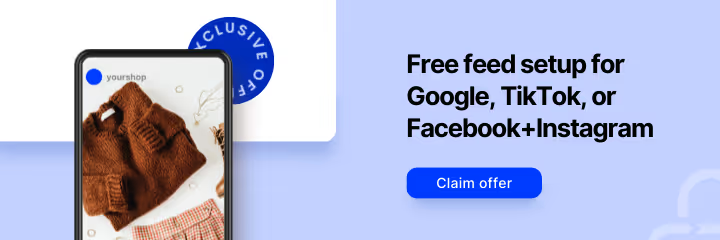In the great big world of ecommerce, there’s no better place to be than apparel. More people are shopping for clothes online each year, and the retail industry is increasingly looking to online apparel sales as a significant contributor to its growth.
So, obviously, understanding and embracing multichannel strategies is essential for online apparel retailers. But how do you adopt said strategies effectively enough to dominate your space?
It helps if you think of multichannel marketing as if it were traditional product distribution at your local mall. In other words, diversify your products' presence so as to reach shoppers in every corner of shopping real estate.
The Department Stores
The online fashion landscape begins with the “department stores” of the Web; these classic go-to shops are where everyone can find everything -- but usually come out with just a pair of jeans. These include comparison shopping engines (CSEs), marketplaces, and search engines with product listing ads. Their role is simple, but important: to enable apparel merchants to reach millions of shoppers across multiple demographics and categories. Any budding fashion merchant’s online marketing strategy should include at least one or two of these. Here we give you the top three, but you can download our shopping channel guide to see the Top 10 and get additional stats and product feed optimization tips.
Aside from being present in organic and paid keyword search results, apparel merchants need to create and submit a product data feed to Google in order for their products to show up as a Product Listing Ad (PLA) in Google Shopping results.
In recent years Google has changed the concept of what it means to shop online (and what it means to market your product online) when PLAs stopped being free in 2013. Since then, Google Shopping has taken its place as the top CSE -- across all categories, not just apparel -- making it a fashionable source of impressions and clicks.
Amazon
Traditionally known as The Everything Store, this online marketplace is making a strong play for fashion in its bid to reach $200 Billion by learning “how to sell clothes and food” online. Selling on Amazon can be profitable for apparel merchants, but there are many rules and guidelines involved in listing apparel products, and the process takes time. First and foremost, merchants selling products in certain categories -- including clothing and accessories – must be approved by Amazon.
Bing
Although historically not one of the top three channels, Bing is mentioned here because its importance as a fighting competitor to Google PLAs should not go unnoticed. Advertiser spend on Bing Product Ads is steadily climbing, as is their rank in the top 10 CSEs. The best part about Bing Product Ads is that you can use your existing Google feed to set it up, so getting started is easy.
The Fashion Boutiques
Online fashionistas have revolutionized ecommerce with a culture of smaller, more specialized online fashion sites that are finding new ways to engage shoppers. Powered by social commerce and affiliate marketing-based models, this is a competitive space with new channels cropping up all the time. From high fashion to plus size, bohemian to business wear – there’s something for every type of shopper.
With specialty channels it’s all about quality vs. quantity. They may not put up the numbers that the Dominators do, but they are definitely “the” place to be for highly engaged, loyal shoppers who have particular tastes for your product. Here are a couple of major players in this area to watch and consider including in your strategy:
Polyvore
Described as “Vogue meets Google,” this hotspot aims to “unleash an army of Anna Wintours.” Polyvore offers a community-based platform where shoppers can create the looks they want, known as “sets”, and buy them or share them with others. According to Shopify, Polyvore had the distinction of highest average order value among other social channels.
Pinterest is a social media phenomenon that has crossed over nicely into fashion retail. With Pinterest, similarly users create “boards” and share collections of “pins”, or clippings, from practically any topic imaginable. According to Shopify, in 2013 orders from Pinterest grew by 79%.
Wanelo
Known to users as their “mall in a phone,” this social/mobile/marketplace/PLA dynamo turns social connections into sales. Shoppers can save products by everything from color to style to make wishlists. In fact, this feature is so popular that already 3 billion products have been saved -- that’s 140 products per user.
The Mall Directory Kiosk
There are some unique challenges with apparel feeds you should be aware of. In order to be present in any of the channels covered here, it is necessary to create a product data feed. The two biggest challenges we’ve seen with apparel merchants needing to create a feed are:
- How to address product variations (color, sizing, gender, age group, pattern, material, etc. ) and
- How to keep your inventory in sync with channel feeds.
This is where a data management and feed automation solution can ease the burden for merchants. Without a guide to the digital mall, things can get disorienting.
Our team has worked with countless retailers and fashion brands to successfully get their apparel products on all of the right channels. We’d love to help you do the same and we encourage you to contact us if you have any questions.




%20).png)
